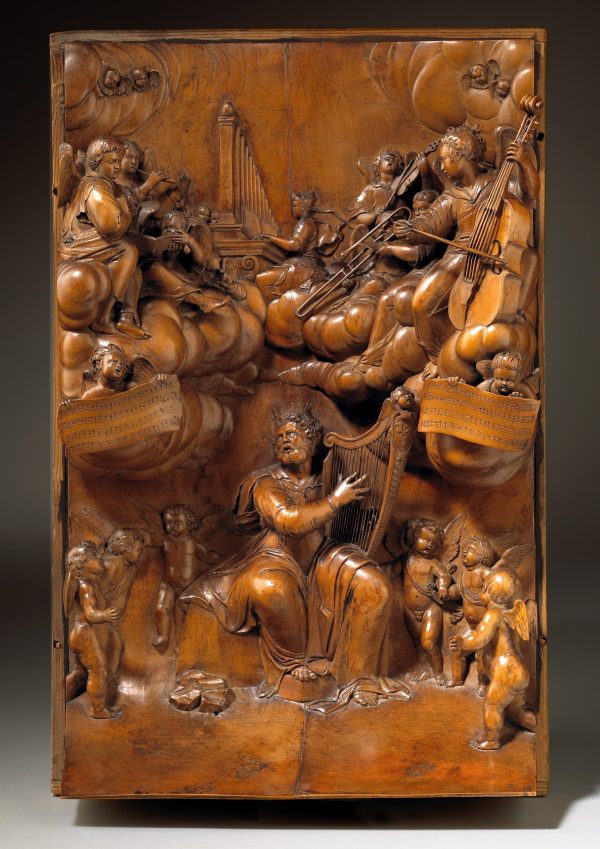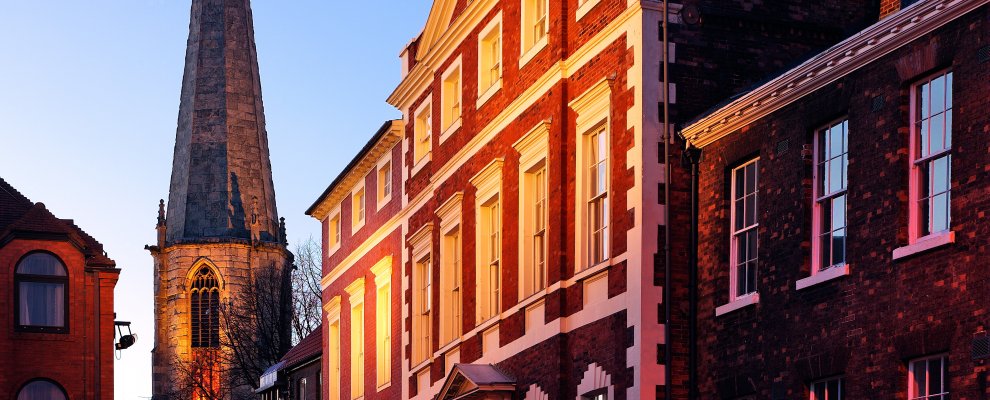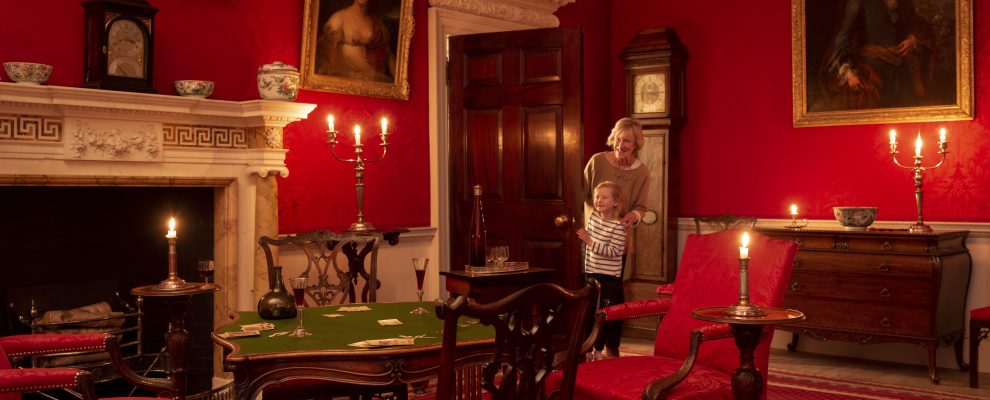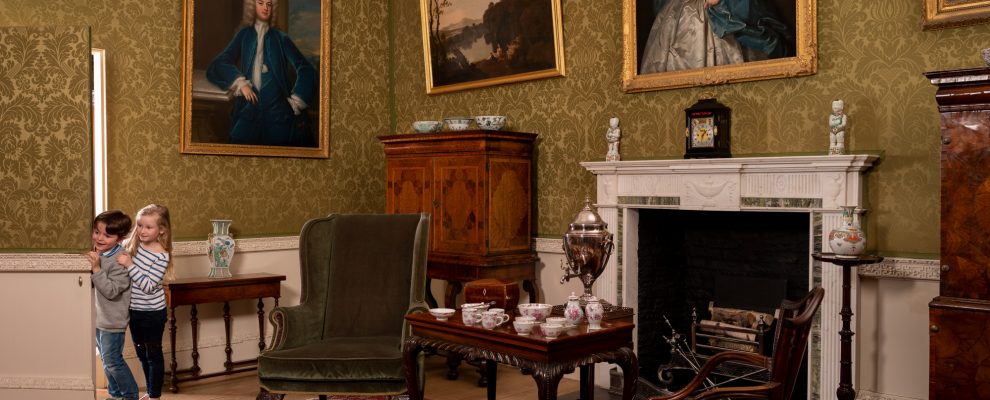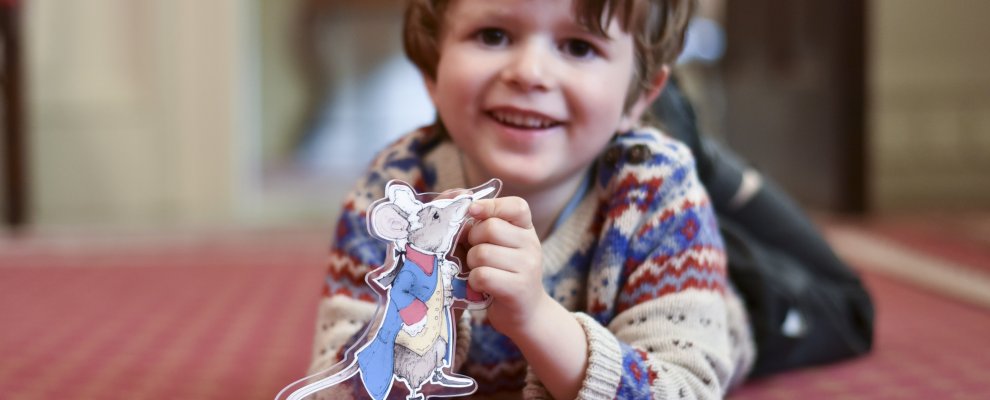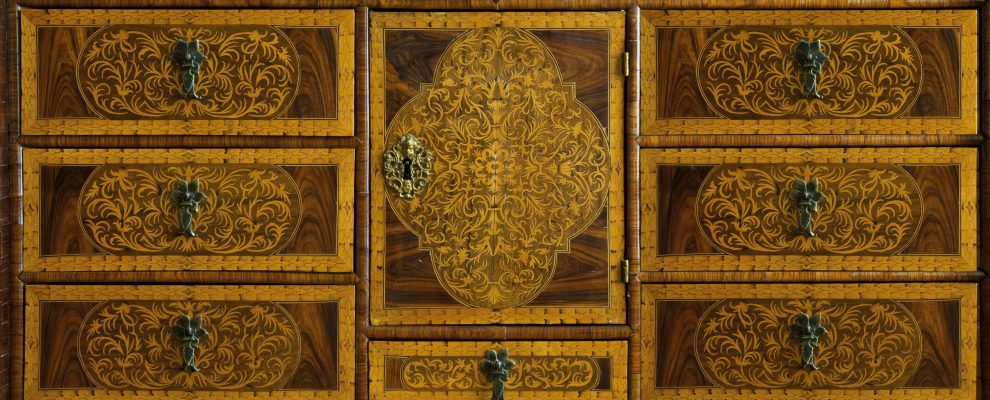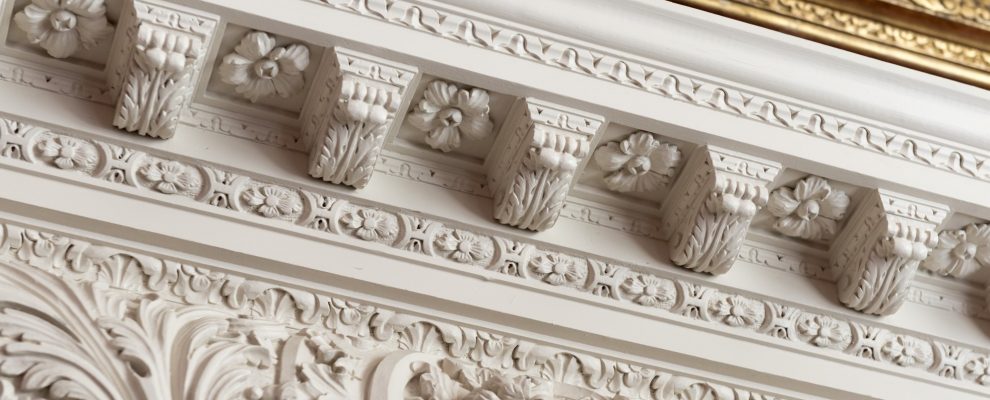Fairfax House launches campaign to save the Michelangelo of Wood’s KING DAVID PANEL
Fairfax House today launches an appeal to save for the nation and for Yorkshire a 17th century sculpture by ‘The Michelangelo of Wood’, Grinling Gibbons – Britain’s greatest decorative woodcarver, celebrated for giving the medium of wood, in the words of Horace Walpole (1717-1797), ‘the loose and airy lightness of a flower’.
The sculpture at risk – a remarkable and beautifully carved high relief panel depicting a heavenly concert led by King David, playing a harp, ringed by dancing cherubs and accompanied by Saint Cecilia, the patron saint of music. This precious artwork is believed to be the earliest known work by Grinling Gibbons. Greater still it is the only known sculpture from this master craftsman’s time in York.
Gibbons achieved immense fame even in his own lifetime becoming royal carver to the King and considered as a ‘British Bernini’. Today this master-carver is recognised throughout the world for his extraordinary genius and skills and his pioneering of a radically new style in sculpture based on realism. But what is less well-known, is that Gibbons spent his first three formative years (c.1667-1671) in York perfecting his craft. In this burgeoning city, he would have met a vibrant commercial, artistic and intellectual scene.
Produced during this brief period, The King David panel is an incomparable piece of historical evidence of Gibbons’ development as a master carver, sculptor and craftsman. It reveals his remarkable talent in its earliest days when he was little more than 20 years old. As David Esterly (the world-leading authority on Gibbons) points out the King David panel is ‘a key piece of evidence about the early trajectory of Gibbons’s career’.
The panel recently went on the international art market and was due to be sold in March, putting this vital piece in the jigsaw of understanding Britain’s greatest national carver at risk of being lost. The art gallery have offered to withdraw it from sale if Fairfax House can raise the necessary funds to acquire it.
Until now this artwork has remained hidden in international private collections and this represents the first and only opportunity to secure it for Yorkshire and the nation. In order to save this immensely rare piece of British history from international export and sale, Fairfax House (York Civic Trust) is launching an urgent major fundraising campaign – Save the King – to acquire it for its collection and ensure permanent public access in its place of creation.
As a home for this incomparable York-made piece, Fairfax House is second to none. Fairfax House’s core mission is to explore the world of Britain’s urban Georgian life and reveal the rich eighteenth-century heritage of the townhouse by using its unique architectural features, important York city-centre townhouse setting, outstanding collections and archives. Its location at Fairfax House will bring regional access to those who may not have the opportunity to visit metropolitan-based national institutions.
If saved, this masterpiece would become a lynchpin of a collection that cherishes Britain’s legacy of exquisite craftsmanship in the long-eighteenth century. It would also become the focal point of the exhibition Made in York: Inventing and Enlightening the Georgian City (5 May-12 Nov 2017) which explores the wealth of pioneering artists, craftsmen and thinkers who lived and worked in this city. More importantly still, this panel has a provenance to the Yorkshire Barwick and Fairfax families giving it even greater connection to Fairfax House.
As Hannah Phillip, Director, commented:
‘Our vision is that through this appeal, Fairfax House will secure a lasting legacy for the nation and to unlock the door to an object that has remained hidden away in private collections throughout its life.
Above all, we want to bring awareness to the extraordinary genius and skill of Grinling Gibbons, and show what extraordinary things could be created from the medium of wood by the hand of one individual.’
So far Fairfax House has raised just over £240,000 towards the appeal with £100,000 generously granted from the Heritage Lottery Fund (Yorkshire), £100,000 from Art Fund and £42,500 from Arts Council England/V&A Purchase Grant Fund.
Michael Sturge (Chairman, Fairfax House and Treasurer of York Civic Trust) commented:
‘We are immensely grateful to the HLF, Art Fund and ACE/V&A Purchase Grant Fund for their generous support towards the ‘Save the King’ campaign. It is tremendous recognition of the importance of this artwork and that it should be saved for the benefit of York, Yorkshire and the nation. It is rare that those who have a passion for this wonderful city have an opportunity to enhance its rich history. This is one such opportunity.’
Julia Brettell (National Programmes Manager) from the Victoria and Albert Museum also added:
‘The Arts Council England and V&A Purchase Grant Fund are pleased to support the acquisition of this exquisite relief. The superb quality of Gibbons’ carving and the relief’s close association with the Barwick and Fairfax families, make it an exceptional acquisition for Fairfax House.’
A final £60,000 must be raised to save this panel and secure the purchase, and Fairfax House is now going public with its appeal to ask for the nation’s support of this cause.
Press call: Thursday 27th April at 10.00am – Grinling Gibbons’ King David Panel arrives at Fairfax House for display in the exhibition Made in York – to be unpacked by Hannah Phillip, Director.
ENDS
The ‘Save the King’ Appeal
Donations to the appeal can be made via MyDonate, with more information on the Grinling Gibbons King David carving and links to the appeal via the Fairfax House website: www.fairfaxhouse.co.uk/SOSGrinlingGibbonsAppeal
Follow progress on Twitter at #savetheking
Or follow Fairfax House on Facebook or Twitter @fairfax_house
NOTES TO THE EDITOR
Gibbons
Gibbons was born to English parents in Rotterdam on 14 April 1648. His earliest training remains something of a mystery. Before his twentieth birthday, around 1667 Gibbons moved to England, first settling in York, perhaps through connections in the wool trade. It is understood that he spent three years working under the pre-eminent York architect, builder and carver, John Etty (c.1634-1708).
Usually working in limewood, a material he introduced to England as a versatile alternative to the native oak, Gibbons’ characteristic cascades of lifelike blossoms, fruits, foliage, birds and fish can be found adorning the interiors at Windsor Castle, Hampton Court Palace, St. Paul’s Cathedral, other London churches, Petworth House, Burghley, Badminton and numerous other great country houses, in addition to Trinity College Oxford and Trinity College Cambridge. He also worked in marble, producing an impressive array of funerary monuments which can be found in Westminster Abbey, St Paul’s Cathedral, Rochester Cathedral, St Patrick’s Cathedral Dublin and York Minster (amongst others).
After his time in York, Gibbons moved to Deptford where John Evelyn first encountered him, and upon seeing his copy of The Crucifixion after Tintoretto (1671), now on display at Dunham Massey (National Trust), introduced him to Charles II and other leading patrons. From this point onwards Gibbons grew his practice, which at its height employed as many as fifty assistants and produced an immense outpouring of creative talent and exquisite skill.
The King David Panel
The King David panel is a narrative high relief celebrating Psalms 148 and 150 and reflecting Gibbons’ own love of music. It vividly reveals Gibbons’ emerging sculptural agenda, and prefigures the now famous narrative relief ‘Crucifixion after Tintoretto’ (1671) with which the diarist John Evelyn (1620-1706) was so captivated. Although carved in limewood the ‘Crucifixion’ stylistically bears close affinity to the King David panel, and similarly underscores the sculptor’s use of engravings as the basis for some of his early compositions.
As inspiration for the King David panel, Gibbons copied Peter Candid’s (c1589-93) painting of ‘The Performance of a Motet of Orlando di Lasso’ in every detail – except for the cartouche on David’s harp. He altered this to carry the coat of arms of the Barwick family (three bears’ heads) instead of the arms of Bavaria as in the painting.
The work was almost certainly in the collection of the Fairfax Family, where it appears to have acted as a catalyst for other equally magnificent commissions in stained glass on the same theme. Sir Robert and Lady Barwick’s daughter and heir, Frances (1655-1684), married Henry Fairfax, 4th Lord Fairfax (1631-88). Their son, Thomas Fairfax, 5th Lord Fairfax (1657-1710), appears to have been likewise particularly inspired by the imagery found in Peter Candid’s painting, commissioning two stained glass windows on the subject by the leading glass painter Henry Gyles (1645-1709): one in c1700 for St Helen’s Church, at Denton and one for his property at Nun Appleton (which is now located at Womersley Hall).
The King David panel remained hidden until the 20th century. It first came up for auction at Sotheby’s in 1963 (London, November 25, 1963, lot 102) after having resided in the P.B. Meyer Collection. Through the twentieth and early twenty-first centuries it went on to pass through a small number of other collections.
It was also exhibited in London at the Victoria & Albert Museum’s exhibition: Grinling Gibbons and the Art of Carving, 1998-1999. It also appears in the accompanying exhibition catalogue and monograph by David Esterly (Victoria & Albert Publications, 1998, pp. 41-51, illus. p. 43, fig. 23).
Fairfax House and York Civic Trust
Fairfax House is part of the charity York Civic Trust which is committed to protecting and enhancing York’s architectural and cultural heritage, championing good design and advancing the high place which York holds amongst the cities of the world.
GRANT FUNDERS
Heritage Lottery Fund
Thanks to National Lottery players, we invest money to help people across the UK explore, enjoy and protect the heritage they care about – from the archaeology under our feet to the historic parks and buildings we love, from precious memories and collections to rare wildlife. www.hlf.org.uk. Follow us on Twitter, Facebook and Instagram and use #NationalLottery and #HLFsupported.
About Art Fund
Art Fund is the national fundraising charity for art. In the past five years alone Art Fund has given £34 million to help museums and galleries acquire works of art for their collections. It also helps museums share their collections with wider audiences by supporting a range of tours and exhibitions, and makes additional grants to support the training and professional development of curators. Art Fund is independently funded, with the core of its income provided by 123,000 members who receive the National Art Pass and enjoy free entry to over 240 museums, galleries and historic places across the UK, as well as 50% off entry to major exhibitions and subscription to Art Quarterly magazine. In addition to grant-giving, Art Fund’s support for museums includes Art Fund Museum of the Year (won by the V&A, London, in 2016) and a range of digital platforms.
Find out more about Art Fund and the National Art Pass at www.artfund.org
For further information please contact Madeline Adeane, Press Relations Manager, madeane@artfund.org / 0207 225 4804
ACE/V&A Purchase Fund
- The Arts Council England/Victoria and Albert Museum Purchase Grant Fund is a government fund that helps regional museums, record offices and specialist libraries in England and Wales to acquire object relating to the arts, literature and history.
- It was established at the Victoria and Albert Museum (V&A) in 1881 and continues to be part of its nationwide work.
- The annual budget, currently £750,000, is provided by Arts Council England (ACE).
- Each year, the Purchase Grant Fund considers some 200 applications and awards grants to around 100 organisations, enabling acquisitions of over £3 million to go ahead.
- Visit the website: www.vam.ac.uk/purchasegrantfund
